What’s new with regard to exclusive distribution under the new exemption regulation?
Exclusive distribution means that the supplier allocates a territory or customer group exclusively to itself or to one or a limited number of buyers. It prevents other buyers from “actively” selling into the exclusive territory or to the exclusive customer group. Through this mechanism, the seller decides to prohibit “active” sales in that territory or to that group of customers by other distributors. “Passive sales”, on the other hand, should remain permitted. These agreements are block-exempted on the condition that the market share conditions are met. Please find below the main changes made in the new Vertical Block Exemption Regulation (“VBER”) and the accompanying new Guidelines on vertical restraints (“Vertical Guidelines”) regarding exclusive agreements:
Introduction of the definitions of active and passive sales in the new VBER
The definitions of active and passive sales have been introduced in article 1, paragraphs (l) and (m) of the new VBER.
“Active sales” corresponds now to actively targeting customers, including through price comparison services or advertising on search engines targeting particular territories or customer groups or using a website with a top-level domain specific to certain territories or languages commonly used in countries other than those where the buyer is established.
“Passive sales” correspond to sales made in response to unsolicited requests from individual customers, including participation in public procurement and responding to private invitations to tender.
Consequently, contrary to the previous regime, online sales will no longer be systematically qualified as passive sales. It follows that, in the context of exclusive distribution, the seller will now be able to prohibit online sales by distributors in certain contexts.
Introduction of the concept of “shared exclusivity”
Under the previous VBER, the exemption could only benefit to the situation where only one distributor had been appointed in the territory concerned.
The concept of "shared exclusivity" agreement has been introduced in the new VBER in article 1(h) and provides that the supplier may appoint more than one buyer as exclusive distributor in a given territory or for a given customer group. This new feature is intended to encourage investment in the promotion and sale of the supplier's goods or services.
The Vertical Guidelines state that the number of distributors should be proportional to the size of the territory. The number of "co-exclusive" resellers is limited to five because of the risk of free riding. Indeed, network players could unfairly benefit from strategies implemented by competitors without bearing the associated costs.
Active sales restrictions can be passed on
According to article 4(b)(i) of the new VBER, the supplier may now require its distributors to oblige their direct customers not to make active sales into exclusive territories or to exclusive customer groups.
Combination of exclusive and selective distribution
The combination of exclusive and selective distribution in the same territory is still not block-exempted. Nevertheless, the VBER caters for more flexibility within the co-existence of both selective and exclusive networks. Article 4(b)(ii) of the new VBER explicitly allows a supplier to protect its selective distributors by allowing the restriction of active and passive sales by an exclusive distributor to unauthorised distributors into a territory where the supplier operates a selective distribution system.
FOR MORE UPDATES ON THE NEW VBER SEE :
